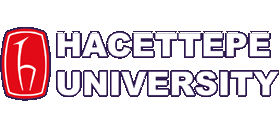| Obligation |
: |
Elective |
| Prerequisite courses |
: |
ELE301 |
| Concurrent courses |
: |
ELE409 |
| Delivery modes |
: |
Face-to-Face |
| Learning and teaching strategies |
: |
Lecture, Question and Answer, Drill and Practice, Other: This course must be taken together with ELE409 DIGITAL SIGNAL PROCESSING LABORATORY. |
| Course objective |
: |
Successful students are expected to gain the following abilities: Knowledge of basic mathematical analysis and signal processing methods, processing of signals both in time and frequency domains. |
| Learning outcomes |
: |
A student who completes the course successfully will Recognize signal processing problems, Model the encountered problems, Know which algorithms can be used to solve the problem, know the advantages and disadvantages of these algorithms, Apply the techniques and algorithms learnt in the class to problems encountered in projects and other real-life applications, Have adequate knowledge to follow and understand similar signal processing methods. |
| Course content |
: |
Discrete-time signals and systems. Difference equation representation. Sampling, decimation, interpolation. Review of the Z-transform. Transform analysis of linear, time-invariant systems. Structures for discrete-time systems. Effects of quantization. Infinite impulse response (IIR) and finite impulse response (FIR) filter design techniques. The discrete Fourier series, the discrete Fourier transform and Fast Fourier transform. Intoduction to two dimensional signals and systems. |
| References |
: |
1- Oppenheim, A.V. and R.W. Schafer , Discrete-time Signal Processing.Pearson, 2010.; 2- Lecture Notes. |
Course Outline Weekly
| Weeks |
Topics |
| 1 |
Review of Discrete-time signals, systems, Fourier, Z-tr. |
| 2 |
Sampling, Decimation, Interpolation. |
| 3 |
Diffrence Equation Representation, Frequency Response . |
| 4 |
Relation Between Magnitude and Phase, Inverse systems, All-pass Systems. |
| 5 |
Flow Graph Realization. |
| 6 |
Quantization |
| 7 |
Term Exam 1 |
| 8 |
Analog Butterworth and Chebyshev Filter Design. |
| 9 |
Digital Butterworth and Chebyshev Filter Design, FIR Filter Design |
| 10 |
Discrete-time Fourier Series, DFT, Properties of DFT. |
| 11 |
Convolution with DFT (Overlap-add/save). |
| 12 |
Fast Fourier Transform. |
| 13 |
Term Exam 2 |
| 14 |
2-D Signal Processing. |
| 15 |
Preparation for Final exam |
| 16 |
Final exam |
Matrix Of The Course Learning Outcomes Versus Program Outcomes
| Key learning outcomes |
Contribution level |
| 1 |
2 |
3 |
4 |
5 |
| 1. |
Possesses the theoretical and practical knowledge required in Electrical and Electronics Engineering discipline. | | | | | |
| 2. |
Utilizes his/her theoretical and practical knowledge in the fields of mathematics, science and electrical and electronics engineering towards finding engineering solutions. | | | | | |
| 3. |
Determines and defines a problem in electrical and electronics engineering, then models and solves it by applying the appropriate analytical or numerical methods. | | | | | |
| 4. |
Designs a system under realistic constraints using modern methods and tools. | | | | | |
| 5. |
Designs and performs an experiment, analyzes and interprets the results. | | | | | |
| 6. |
Possesses the necessary qualifications to carry out interdisciplinary work either individually or as a team member. | | | | | |
| 7. |
Accesses information, performs literature search, uses databases and other knowledge sources, follows developments in science and technology. | | | | | |
| 8. |
Performs project planning and time management, plans his/her career development. | | | | | |
| 9. |
Possesses an advanced level of expertise in computer hardware and software, is proficient in using information and communication technologies. | | | | | |
| 10. |
Is competent in oral or written communication; has advanced command of English. | | | | | |
| 11. |
Has an awareness of his/her professional, ethical and social responsibilities. | | | | | |
| 12. |
Has an awareness of the universal impacts and social consequences of engineering solutions and applications; is well-informed about modern-day problems. | | | | | |
| 13. |
Is innovative and inquisitive; has a high level of professional self-esteem. | | | | | |
